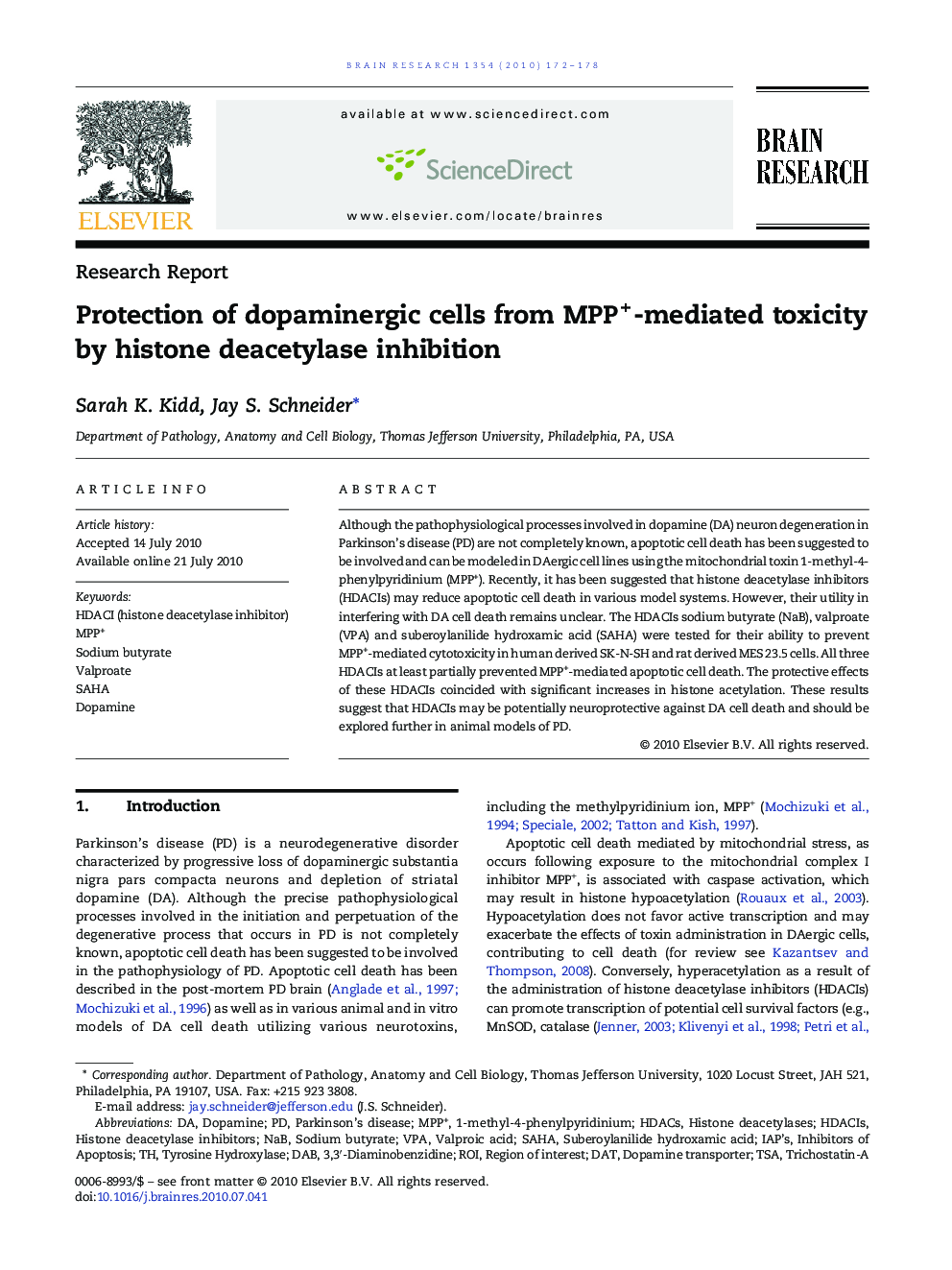| Article ID | Journal | Published Year | Pages | File Type |
|---|---|---|---|---|
| 4326588 | Brain Research | 2010 | 7 Pages |
Although the pathophysiological processes involved in dopamine (DA) neuron degeneration in Parkinson's disease (PD) are not completely known, apoptotic cell death has been suggested to be involved and can be modeled in DAergic cell lines using the mitochondrial toxin 1-methyl-4-phenylpyridinium (MPP+). Recently, it has been suggested that histone deacetylase inhibitors (HDACIs) may reduce apoptotic cell death in various model systems. However, their utility in interfering with DA cell death remains unclear. The HDACIs sodium butyrate (NaB), valproate (VPA) and suberoylanilide hydroxamic acid (SAHA) were tested for their ability to prevent MPP+-mediated cytotoxicity in human derived SK-N-SH and rat derived MES 23.5 cells. All three HDACIs at least partially prevented MPP+-mediated apoptotic cell death. The protective effects of these HDACIs coincided with significant increases in histone acetylation. These results suggest that HDACIs may be potentially neuroprotective against DA cell death and should be explored further in animal models of PD.
Research Highlights►NaB, VPA, and SAHA reduced MPP+ toxicity in human and rat DAergic cell lines. ►Protective actions of HDACIs coincided with histone hyperacetylation. ►Protective effects of HDACIs may be drug, dose and cell type dependent.
